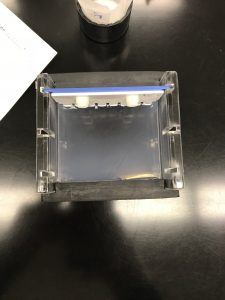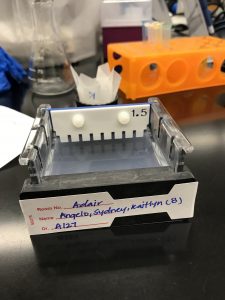Lab 14: Posters 04/19/2018
Purpose
The purpose for today’s lab was to continue working on our posters and our presentations.
Abstract
Currently, the routes for examining species biodiversity in the soil have been deficient. This study is concerned with finding optimal protocols for determining the biodiversity of ciliates in the soil, which is an indicator of soil health. The purpose of this work is to develop a working protocol for DNA extraction of soil samples. With a sufficient protocol, the metabarcoding of purified DNA samples will be able to measure the diversity of environmental DNA (eDNA). The optimal protocol has been identified to be the modified Chelex DNA extraction. Other protocols such as MoBio’s PowerSoil Kit and ludox centrifugation have proven to be inadequate. The Chelex protocol uses chelating agents combined with centrifugation to obtain purified DNA. The V4 region, a variable region of the ribosomal 18S gene, was then amplified through PCR producing V4 PCR products 50% of the time. Eight out of 16 trials had V4 positive PCR products around 450 base pairs as shown by gel electrophoresis. This study is important to determine ciliate biodiversity for evaluating the well-being of food web interlinkages and biochemical cycles. While the modified Chelex protocol has shown to be effective half of the time, it provides the foundation for an ongoing investigation into further steps. Future goals include further developing of the protocol to more consistently obtain DNA for analysis. When developed, metabarcoding of the eDNA will allow the comparison of sequences to existing databases for species determination.
Poster
Conclusion
At the end of today’s lab we were very successful in completing a majority of the poster. Furthermore, we were able to establish the main topics we wanted to focus for when we present.













